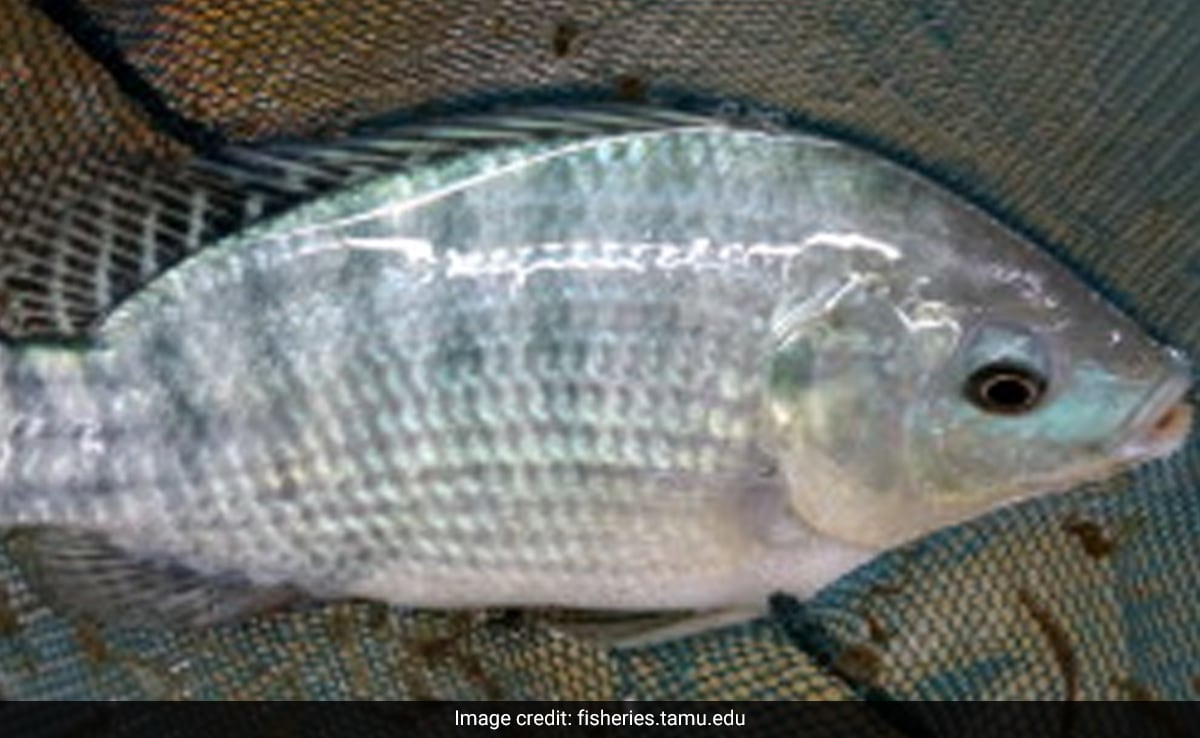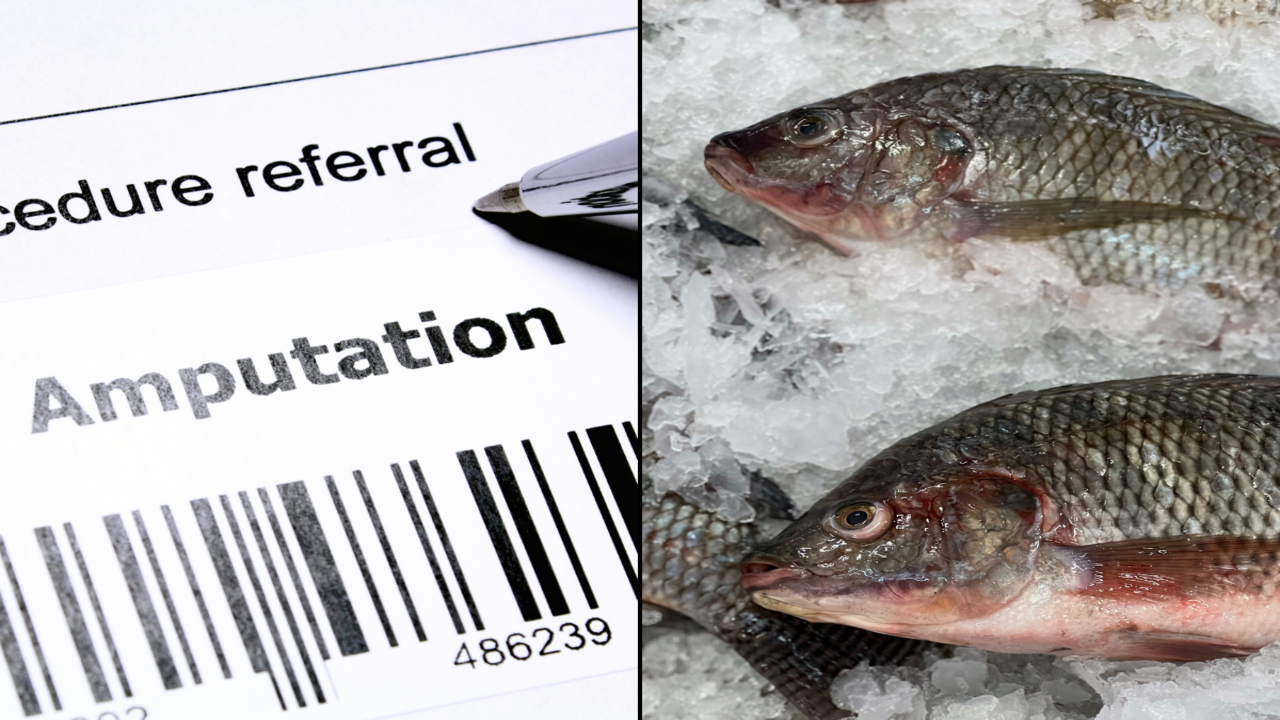In a shocking and devastating turn of events, a 40-year-old woman in California had to undergo the amputation of all her limbs after consuming fish from a local market. The woman, identified as Laura Barajas, cooked and ate the fish before being hospitalized for over a month. It is reported that she purchased tilapia, and shortly after, she started experiencing symptoms of a Vibrio vulnificus infection. Experts warn that such infections caused by consuming seafood may become more common as climate change continues to warm the oceans. The case serves as a stark reminder of the potential dangers associated with the food we consume.
Woman Forced to Have All Her Limbs Amputated After Eating Fish

Overview
In a tragic incident, a 40-year-old woman in California recently had to undergo a life-altering surgery that resulted in the amputation of all her limbs. The woman, named Laura Barajas, developed a severe bacterial infection after consuming fish that she bought from a market in San Jose. This unfortunate case highlights the dangers associated with certain types of seafood consumption and underscores the potential risks posed by the increasing impact of climate change on our oceans.
Background Information
Laura Barajas purchased tilapia from a market in San Jose and subsequently cooked and consumed it. However, shortly after ingesting the fish, she began experiencing symptoms of a Vibrio vulnificus infection. This infection, caused by the Vibrio bacteria, can have severe consequences and has been known to be associated with warm coastal waters. In Barajas’ case, her condition deteriorated rapidly, leading to the amputation of all her limbs in order to save her life.

Details of the Infection
Vibrio vulnificus infection is a serious and potentially fatal condition. Approximately 20% of individuals who contract this infection do not survive, sometimes succumbing to the illness within just two days. Patients with this infection often require intensive care and may need to undergo amputations, as was the case with Laura Barajas. In addition to limb amputations, patients may also require removal of dead tissue. The symptoms of a Vibrio vulnificus infection can range from stomach cramping and watery diarrhea to fever, vomiting, and blistering skin lesions.
Causes of Vibrio Vulnificus Infection
The Vibrio bacteria are commonly found in warm coastal waters, including the Gulf of Mexico and other regions with similar climates. People can become infected with Vibrio vulnificus by consuming raw or undercooked seafood, particularly oysters, or by exposing open wounds to seawater. It is crucial to handle and prepare seafood properly to minimize the risk of infection.

Symptoms and Diagnosis
The symptoms of a Vibrio vulnificus infection can vary, but commonly include stomach cramping, watery diarrhea, nausea, fever, vomiting, chills, low blood pressure, and blistering skin lesions. If a wound is infected with the bacteria, symptoms may also include redness, swelling, pain, warmth, discoloration, and discharge. To diagnose a Vibrio vulnificus infection, a healthcare professional may conduct a blood or stool sample analysis or examine the patient’s wound for the presence of the bacteria.
Prevention and Risk Factors
Preventing Vibrio vulnificus infections involves taking certain precautions. Individuals should wash their hands thoroughly with water and soap after handling raw shellfish and cook oysters and other shellfish properly before consumption. Oysters, for example, should be boiled or fried for a designated period of time to ensure the bacteria are destroyed. It is also important to note that certain individuals are at a higher risk of developing severe complications from Vibrio infections, such as those with liver disease, cancer, HIV, diabetes, or thalassemia, as well as individuals on certain medications or who have recently had stomach surgery.

Outbreaks and Reported Cases
Vibrio vulnificus infections are often reported during outbreaks, which may occur on a local or larger, multi-state scale. The Centers for Disease Control and Prevention (CDC) closely monitors these trends and issues health advisories to raise awareness and prevent further infections. The recent case of Laura Barajas serves as a reminder of the potential dangers associated with consuming certain types of seafood.
Financial Support for the Family
Laura Barajas and her family are facing significant financial burdens due to her medical bills and the need for home modifications. A GoFundMe page has been created by a family friend, Anna Messina, to help alleviate some of these expenses. Donations and support from the community can provide much-needed assistance to the family during this challenging time.

Impact on the Family
Laura Barajas’ infection has taken a toll not only on her physical health, but also on her family. Her partner, Jose Valdez, has been a source of unwavering support, but the financial and emotional strain of the situation has been overwhelming. As they adjust to their new circumstances, the family will require significant changes to their daily lives and living environment.
Call for Support
In light of Laura Barajas’ tragic ordeal, there is a call for support from the community. The family is in need of financial assistance to cover medical expenses and home modifications. Additionally, emotional support and understanding from those around them can make a significant difference. This case serves as a reminder that such incidents could happen to anyone, and together, we can offer support and solidarity to those in need. By coming together, we can provide the Barajas family with the help they require during this challenging time.


